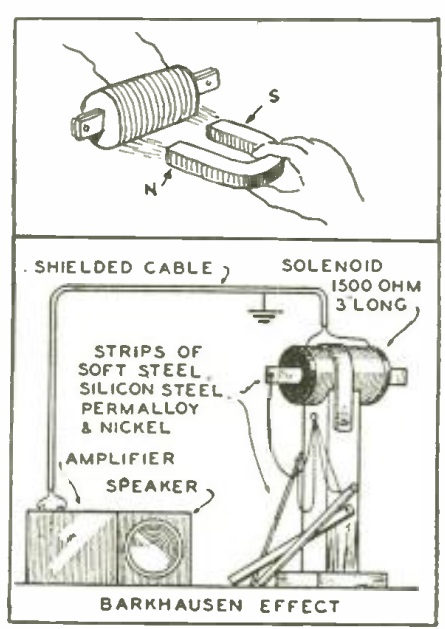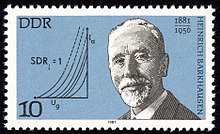 The young scientist wishing to create a simple but spectacular science fair project is almost assured of taking home the blue ribbon by duplicating the 1919 experiment of German scientist Heinrich Barkhausen establishing the domain theory of magnetism. When a piece of ferrous material is magnetized, it does not magnetize evenly. Instead, tiny pieces of material are magnetized together in discrete pieces. This is known as the Barkhausen effect.
The young scientist wishing to create a simple but spectacular science fair project is almost assured of taking home the blue ribbon by duplicating the 1919 experiment of German scientist Heinrich Barkhausen establishing the domain theory of magnetism. When a piece of ferrous material is magnetized, it does not magnetize evenly. Instead, tiny pieces of material are magnetized together in discrete pieces. This is known as the Barkhausen effect.

Barkhausen on 1981 East German stamp. Wikipedia image.
To prove this, a coil is wrapped around a piece of iron, and the coil is connected to the input of an audio amplifier. As a magnet is brought toward the coil, static is heard in the speaker. But if the iron core is removed and the experiment repeated, the static is absent. A simulation of the effect can be found at this link.

Replica of Barkhausen’s experiment. Wikipedia photo.
Full instructions can be found in the January 1941 issue of Radio & Television magazine. You will need 38 gauge or smaller enamel wire to wind the coil, as well as an audio amplifier and speaker.
